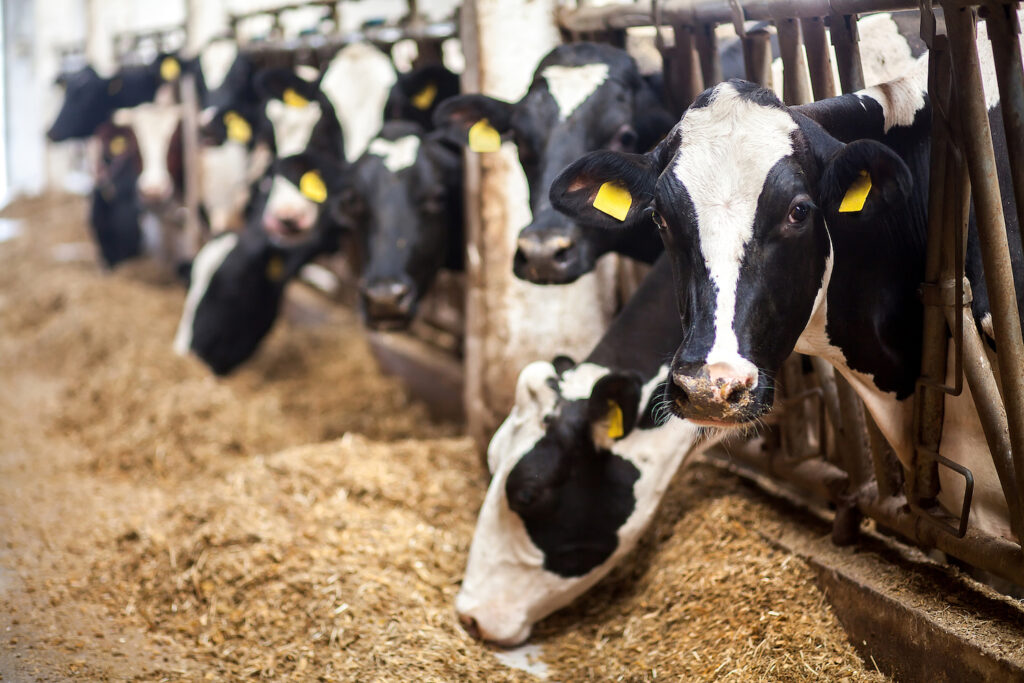Common pitfalls in transition cow management
23rd February 2023
Kate Heller, a vet, dairy farmer and Elanco technical consultant in Truro, shares some of the most common pitfalls and risk factors in transition cow management and how to avoid them.
Lack of feed, water, access and lying space: Ensuring cows have sufficient space and access to feed and water is key for keeping up dry matter intakes, which is central to transition success. If there is lying space for 10 cows, for example, but feed and water access for only five cows, there should only be five cows in the pen.
Presentation is also important: “We need that food in front of them to be as appealing as possible,” Kate said. “While some farms may feel they cannot feed every day as they’ve only got small group numbers, it’s better to simplify the diet to allow you to feed every day, or feed one ration to the far off and close up groups to increase the group size”.
Water access is key for helping to keep dry matter intake up as rations high in chopped straw are very dry. It should be in two locations rather than just one as bully cows could prevent subordinate animals gaining access to the trough, she added.
Moving cows too frequently: When a new cow is moved into a group, feed intake is disrupted while the pecking order is established. “If you do that say two or three times a week those cows are never going to get back to 100% of the intake they should be eating,” Kate pointed out.
Consideration should also be given to bringing heifers into the transition cow shed – this should be done in the far-off dry period to avoid bullying when she is in a vulnerable state in the three weeks before calving.
Overconditioned cows: “We often end up in that fat cow/thin cow cycle where the fat cow calves down and then takes longer to get in calf again as she’s had a tough time post-calving. She then gets fat towards the end of lactation as she’s not milking as much and so is fat again at the next cycle. That is a real problem that all links back into fertility management,” she commented.
Heat stress: Although not relevant in the colder months, heat stress can be another issue. Milkers often have lots of fans etc in the sheds while dry cows may often be in the shed that was deemed unfit for the milkers.
Individual cow factors: g. older cows, twin bearing animals, heifers in some circumstances. These are at higher risk of ketosis and/or milk fever and therefore post-calving disease and will need to be managed accordingly.
It’s been estimated that 75% of dairy cow disease occurs in the first month after calving (Stephen LeBlanc et al, 2006). “It’s such a high-risk period and how we treat these animals in the run up to calving is going to dictate how they perform afterwards. Research by the University of British Columbia has also shown that cows that went on to develop severe metritis already had declining dry matter intakes up to two weeks before calving and these intakes took much longer to come back up – compared to healthy cows who held their DMI right up to the day before calving and regained them very quickly afterwards.
“Farmers often see these outcomes as post-calving illness but actually they’re very much to do with how we manage cows pre-calving. As farmers we can get hung up on the fact that we’ve got lots of fresh cow mastitis or retained placentas, for example, but actually if we can manage the negative energy balance and milk fever as well as possible then the rest should fall into place,” she explained.
Red flags that the transition period is at the root of problems on farm are: fresh cow disease rates and peak yields. “Ketosis can cause a significant amount of milk loss there and it can often be that they’re not getting up to peak as quickly as they should be.”
Kexxtone is a monensin bolus that is put in 3-4 weeks before calving and works for 95 days. “It adapts rumen flora to make more proprionate (a glucose precursor) which narrows the energy gap. It is for high-risk cows that are likely to have a wider energy gap, giving them more glucose to reduce the ketosis risk,” Kate explained.
Trials showed it reduced ketosis risk by 74% in treated cows, giving high risk cows a better chance to optimise their potential in the next lactation. Research has also linked Kexxtone with a potential 25% reduction in use of curative antibiotics. According to one supermarket, the transition period accounts for 60% of antibiotic usage on its farms, so correct management can also have a bearing on antibiotic stewardship.
However, while the bolus can be an important part of the picture, it must be used in conjunction with the other measures discussed above. There are lots of gains to be made from focusing on transition management, Kate concluded. Elanco also offers free farm assessments to provide advice on simple improvements they can make to improve transition management – speak to your vet to find out more.

